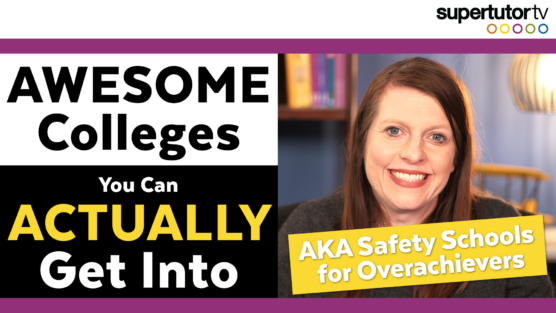Word on the street is that a lot of students applying to competitive colleges seem to be applying to a ridiculous amount of colleges. Why are they doing that?
The Common Application has stated that in the 2023 season, the number of colleges that students applied to went up by 10%. Reality check for you guys: not everyone is applying to a top 20 school, and the average number of applications among all users of the Common Application is actually only 4.3 colleges per student. There are plenty of colleges that have really high admit rates, and when you’re applying to a school with a posh admit rate like that and rolling admissions, you might only need to apply to one. But when you’re applying to super-competitive schools with admit rates like 10%, 5%, or 4%, that’s when you start to get into college lists of over 20 campuses.
The first reason that I see so many students applying to a gob of schools is the lottery effect. They say that if they have a 5% chance of getting into Harvard, a 5% chance of getting into Stanford, and a 5% chance of getting into Princeton, etc., add up all the percentages, and apply it to 20 schools with a 5% admit rate, they would have a 64% chance of getting into one of them. It’s that kind of math that propels people into seeing this as a lottery ticket, and the more lottery tickets you buy, the more chances you have to get in. The truth is that even if Harvard says that you’ve got a 4% or 5% chance of getting into their campus, your application doesn’t have a 4% or 5% chance. Your application either has a 50%, 20%, or 1% chance of getting in because different students have different statistics, activities, and quality of application as a whole that are going to impact their ability to get in. Your probability is vastly different if you do REA or ED versus regular decision, and that varies across different campuses. But there’s so many different things going into this that your admit rate is never actually 5%. So there might be some misconception about this idea that it’s just a lottery.
Now I will say that there is some truth to this. If I ever have a student and they say they only want to apply to four schools, with their list being Harvard, Stanford, Princeton, and one other school, I’m basically going to tell them that they better be comfortable going to the other school because it’s just too hard to get into the competitive ones. And increasingly, compared to ten years ago, when I’ve seen students get into maybe half of the really competitive schools they applied to, now sometimes all students get into is one or maybe two top 10 schools.
The second reason is that college admissions at this highest level are not always meritocracy. And some students recognize that. The factor that edges you in could be something that you have no idea if the campus needs or not. For example, every campus that has an orchestra needs an oboe player, and if Princeton needs an oboe player, they might take you because you’re an oboe player. And I’m not kidding. Obviously, they have way more qualified students than they have space for. It’s not that they’re taking in students who are unqualified, just that these random factors can be the thumb on the scale. But because these factors can affect whether you get in or not, I’m not going to be able to tell you if they, for example, need an oboe player.
The third reason that I see students applying to more schools than ever is a factor called yield protection. Yield is the idea that if I give you an offer of admission, you accept it and say yes. The higher the percentage of students who say yes, the higher the yield. In order to climb in the rankings, schools are graded on a variety of factors, and one of those factors is yield. Schools want to keep this number super high so that their schools look super popular and attractive. For example, the University of Chicago’s yield is about 80%. And they did that by using early decision. But less competitive schools might not have enough ED candidates to really fill their school with super-competitive people. So they might be yield-protecting on their regular decision pool. I will say that with yield protection, typically, if you are a yield protection rejection, you won’t be rejected but waitlisted. And if you are waitlisted, you can always write a letter, because it doesn’t cost a school anything to waitlist you. But also, popping off a waitlist requires there to be room. If a school’s yield tends to be really high, they might not have room to get you off the waitlist. At some point, it is a game of chance, and the more tickets you buy, the more opportunity you possibly have. There is some truth to that.
Inevitably, what this means is that one safety is often not enough, unless you have rolling admissions or something like that where you can get in before the application deadline. That’s why I tell my students that you should have two safeties to actually be safe. And you should be prepared to actually attend your safety, because that is the reality of college admissions right now, especially if you are majoring in computer science. There are a lot of situations in which that is the best that you’re going to do, because there are just too many fish in the pond, and not all of them can hop into the most elite ponds.
So, those are three reasons that I see students apply to a billion colleges. And we hope that has helped you understand a little more about the current status of college admissions!




